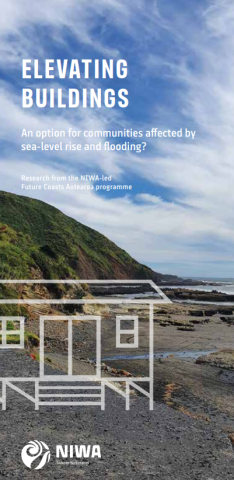Build fit-for-purpose, multi-wellbeing evaluation tools
Led by Paula Blackett & Paula Holland (NIWA)
Work under Research Aim 2 in the Future Coasts Aotearoa programme focusses on the socioeconomic and cultural impacts of relative sea-level rise and adaptation to it.
Research goals
- Accounting for sea-level rise consequences across all four well-beings will require big improvements to current evaluation tools. Our programme will be among the world’s first to capture cascading well-being impacts through time, using a dynamic economic model that includes non-monetary values and Māori worldviews.
- While some studies have evaluated the spatial-temporal distribution of physical sea-level rise impacts, we will stretch this to integrate social-cultural values within a spatial risk tool, so that non-monetary values can also be included in plan-making processes at regional and district spatial levels.
The programme includes case study coastal communities from across Aotearoa.
Te Puuaha| The Lower Waikato River
One case study works with Te Puuaha o Waikato in an area traditionally demarcated by tangata whenua as starting near the town of Te Paina (Mercer) and following the flow of the Waikato River westward to the sea at Port Waikato.
This is a tangata whenua-led case study where research is being conducted to identify opportunities for iwi in the Lower Waikato area to adapt to relative sea-level-rise while retaining connections with their whenua (land), awa (river), and whaanau. This case study is co-led with community-based researchers affiliated with Waikato hapuu (Te Puuaha) and NIWA.
Causal diagrams to help understand wellbeing in Te Puuaha| The Lower Waikato River
Changes such as relative sea level rise can affect our wellbeing over time. Under the Lower Waikato case study for the programme, causal diagrams have been generated that display the effects of change generally on the wellbeing of whaanau over time. The diagrams enable us to better understand the complex influences on wellbeing and how they interconnect to form a ‘system’. This can then assist people to identify areas where action might be best placed to support enhanced wellbeing.
A Tangata Whenua perspective
It is increasingly recognised that to reconcile the impacts of climate change with the resilience of culture, more meaningful conversations are needed with tangata whenua ‘at place’. This report describes a causal diagram to better understand drivers and aspirations of tangata whenua - inclusive of whaanau, hapuu and iwi - affiliated with the Lower Waikato River (Te Puuaha o Waikato).
A Community perspective
This report summarises causal diagrams developed by members of the community at Port Waikato and Akaaka.
Potential adaptation options
Reports were commissioned to inform potential adaptation in the Lower Waikato:
Elevation of buildings
Where it is important for the community to remain physically connected to their remaining land to retain cultural identity and practices associated with the land and whakapapa elevating buildings on the land could potentially allow whānau to safely remain in place for as long as possible.
NIWA commissioned a firm of engineers to estimate possible elevation costs so that the magnitude of the action could be understood. The resulting report outlines general activities that would be needed to elevate buildings in situ, generalised costs and other considerations such as expenses that are not covered and that might need to be addressed at some point.

Paludiculture
Te Puuaha identified paludiculture as a possible activity for the region and are keen to explore its potential. Paludiculture refers to the productive use of wet and rewetted peatlands where peat is preserved, subsidence is stopped and greenhouse gas emissions are minimised.
For the Lower Waikato case study, paludiculture provides a possible means to:
• help the landscape of the Lower Waikato return to unmanaged conditions, enhancing the environmental health of the area and the spiritual and cultural health of the people, while simultaneously.
• softening the blow of agricultural losses arising over time from relative sea level rise and or removal of flood defences.
While paludiculture exists elsewhere in the world, it is still a new option for Aotearoa. This introductory review of paludiculture was commissioned so that the team could understand what paludiculture is, how it can be done and general issues involved in considering this for the Lower Waikato. However, in practice, a variety of wetlands farming options might be useful for the Waikato, or other parts of New Zealand.
